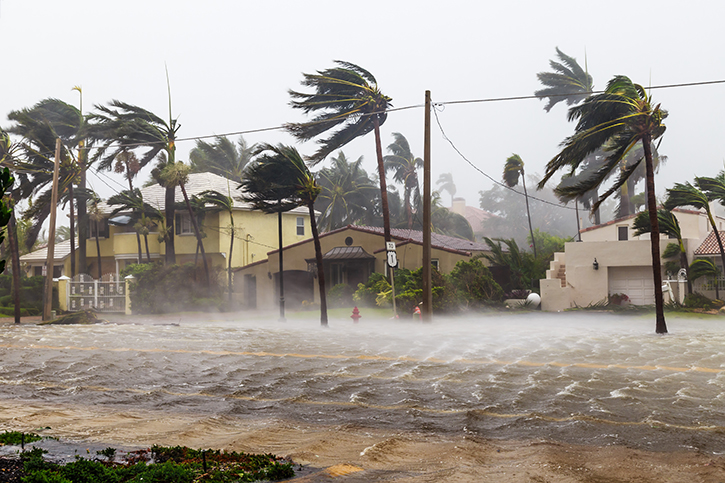Hurricane Safety
Hurricanes are massive storm systems that form over ocean water and often move toward land. Hurricanes bring high winds, heavy rain, storm surge (a rise in water level), flooding, and tornadoes. These storms are dangerous and can even cause damage to places far inland.
Before the storm, make a plan to evacuate. Know where you’ll go, how you’ll get there, and where you will stay. Plan well in advance if you will need help leaving or if you use public transportation. If you cannot evacuate, plan to shelter safety. Below are some tips on what to do before a storm:
- Prepare to live without power, water, gas, phone, and internet for a long period of time
- Practice going to a designated safe shelter for high winds. The next best protection is a small room with no windows on the lowest level of a sturdy building that is not likely to flood
- Be aware that flooding can happen quickly. Have a plan to evacuate fast before floodwaters reach you
- Create a personal support team of people you may assist and who can assist you
It’s vital to gather food, water, medicine, and other emergency supplies prior to any severe weather event by creating both a “stay-at-home kit” and a “go-kit”:
- Stay-at-home kit: Include 2 weeks of supplies, since stores and pharmacies may be closed or inaccessible
- Go-kit: Include 3 days of supplies that you can carry with you. Include backup batteries and chargers for your devices (cell phone, CPAP, wheelchair, etc.)
- Have a 1-month supply of medication in a child-proof container
- Keep personal, financial, and medical records safe
During the storm, listen to what the local authorities advise. If they instruct to evacuate, grab your go-kit and leave right away. Follow evacuation routes and avoid taking shortcuts as they may be blocked. Check with local officials for shelter locations.
Also, determine your best protection from high winds and flooding. Take shelter in a designated storm shelter or an interior room (especially during high winds). Stay away from glass windows and doors and move to higher ground before flooding begins. Never walk, swim, or drive through floodwater. Remember — “turn around, don’t drown.”
Follow the advice below on what to do after the storm:
- Wait for officials to announce that the area is safe before returning home
- Avoid damaged or fallen power lines, poles, and downed wires
- Do not touch floodwaters since they may contain sewage, bacteria, and chemicals that can make you ill
- If the power is out, use flashlights or battery-powered lanterns to reduce fire risk
- Wear appropriate protective equipment, including gloves, goggles, and boots
- Clean and disinfect everything that was exposed to water
- Work with a partner when lifting or cleaning heavy debris
- Make sure that you have proper training before using equipment, such as a chainsaw
- Heart attacks are a leading cause of deaths after a hurricane. Be mindful not to overwork
For more information on hurricane safety, visit: https://www.redcross.org/.../types-of.../hurricane.html
Credit: Red Cross
